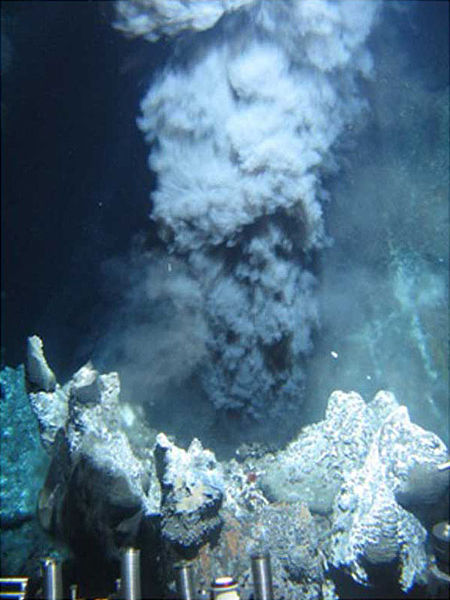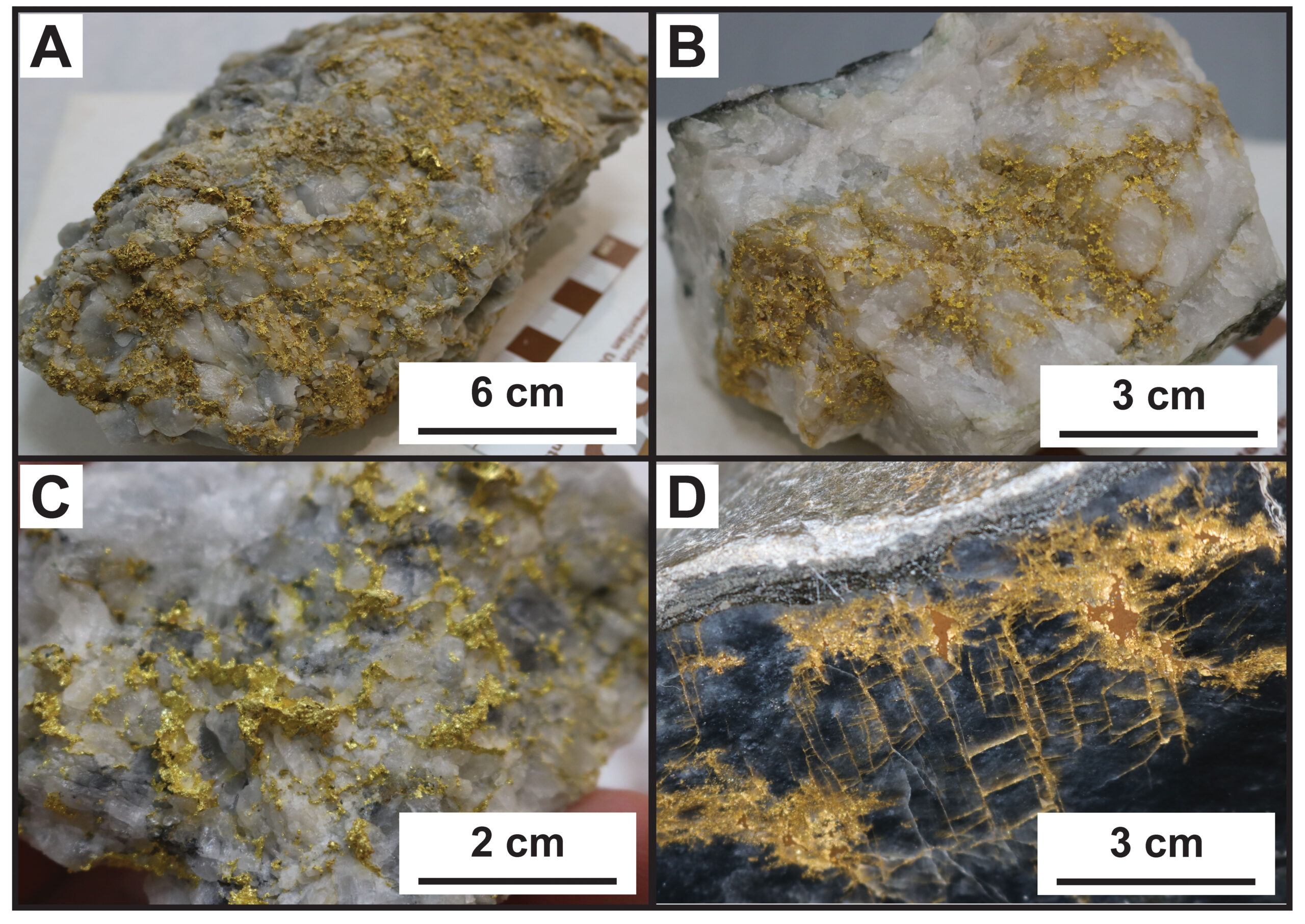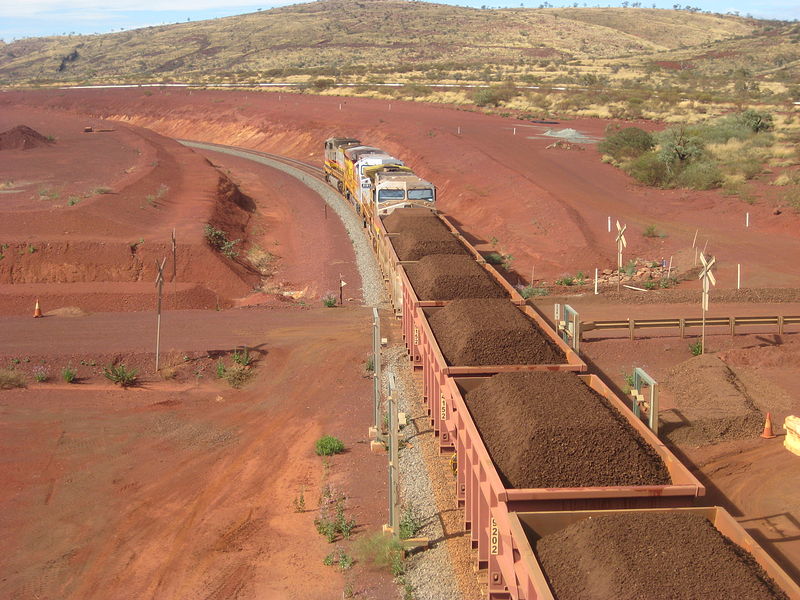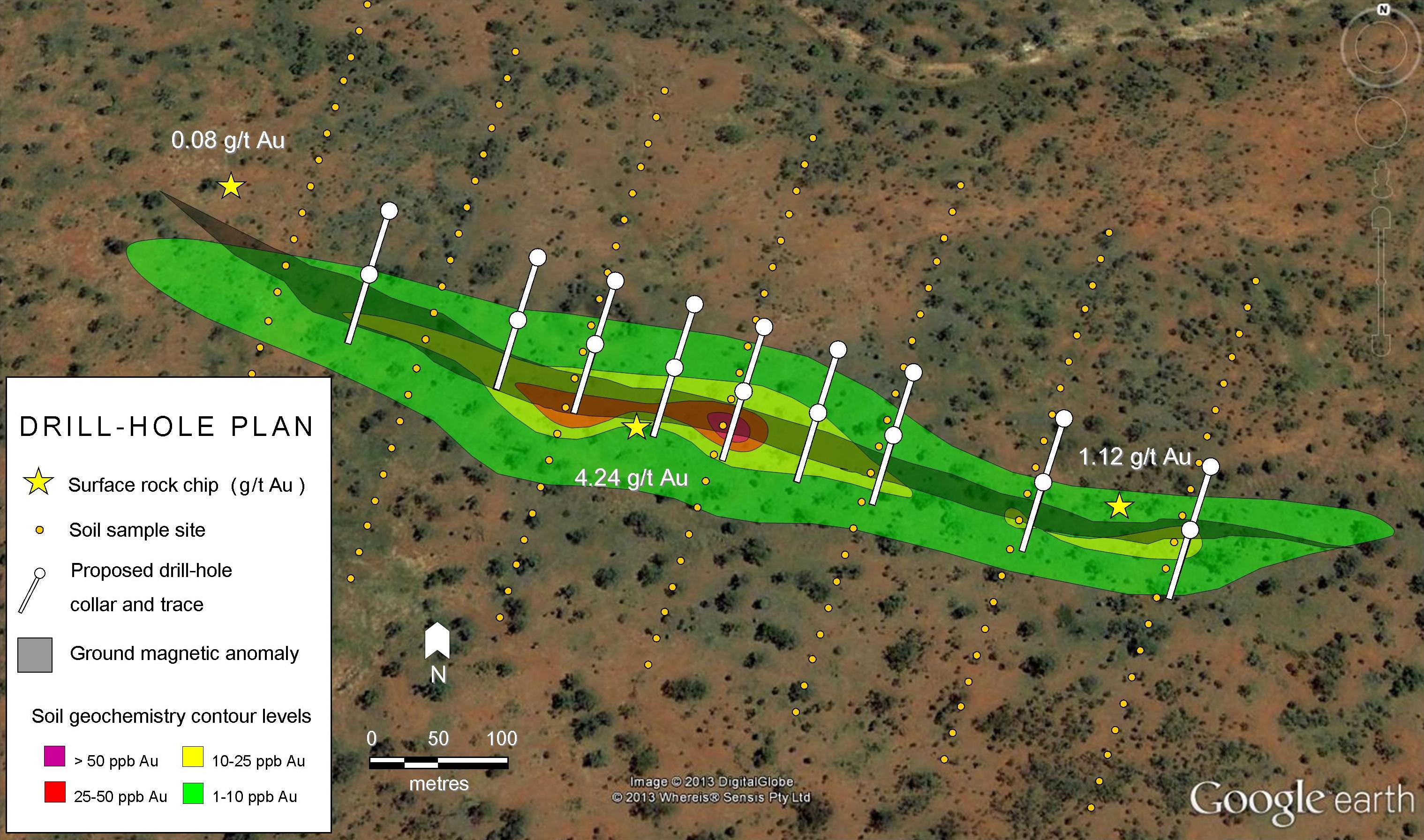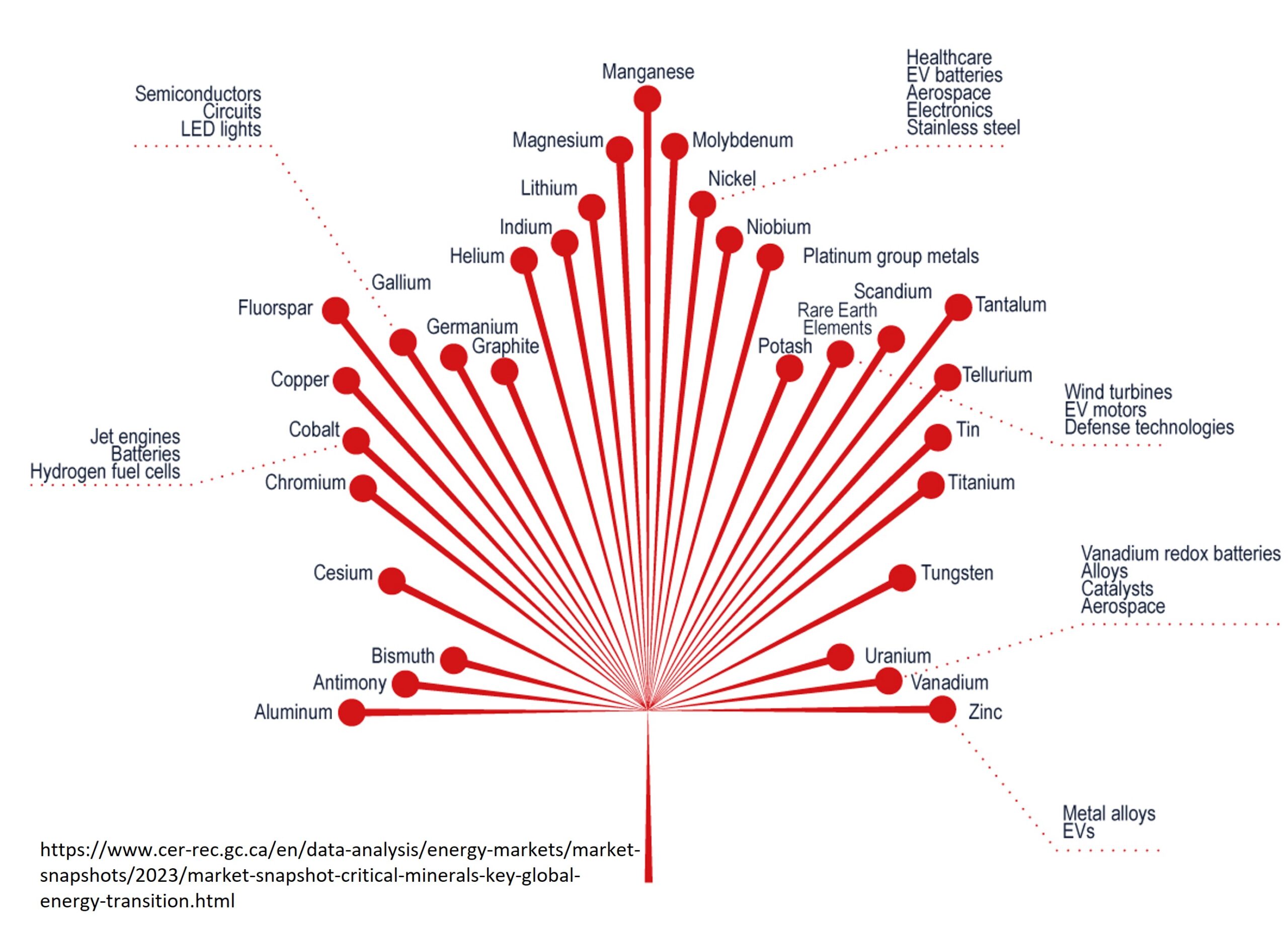Finding an extension of the same rock unit that hosts gold in a nearby deposit is definitely worth follow-up, but it doesn’t necessarily mean that it contains economic quantities of gold.
[box type=”info” align=”aligncenter” ]Disclaimer: This is an editorial review of a public mining company press release and is not an endorsement. It may include opinions or points of view that may not be shared by the companies mentioned in the release. The editorial comments are highlighted so as to be easily separated from the release text and portions of the release not affecting this review may be deleted. Read more at How to Use this Site.[/box]
VANCOUVER, BRITISH COLUMBIA–(Marketwired – Sept. 8, 2014) – Carlin Gold Corporation (TSX VENTURE:CGD), (“Carlin” or the “Company”) is pleased to report the geological assessment of its limited core drilling program completed in fall 2013 on its Cortez Summit property (“Cortez Summit” or the “Property”), Eureka County, Nevada.
[box type=”note” align=”aligncenter” ] Carlin Gold Corp is a junior exploration company that has been exploring for Carlin-type gold deposits in Nevada, USA since 2005. The company is currently working on it’s Cortez Summit property that is within striking distance of past producers and recent discoveries. This release pertains to it’s recent geologic assessment of a hole that was drilled last fall. [/box]
In September-October 2013 the Company re-entered vertical reverse circulation hole CS12-2 and deepened it by core drilling. Carlin geologists were encouraged that the core hole established the presence of favorable ‘Lower Plate’ rocks and retained the services of Dr. Harry Cook, President/CEO of Carbonate Geology LLC to review the core. Dr. Cook is a well known geologist specializing in carbonate stratigraphy in the major gold districts in Nevada and is very familiar with the Cortez area. He has been acknowledged for his role in developing an understanding of the gold-hosting Paleozoic stratigraphy, including the neighboring Goldrush discovery. Dr. Cook examined the lower 984.5 feet (300 m) of the core hole CS12-2C and interpreted the bottom 650 feet (198 m) of the hole to contain Devonian age strata.
[box type=”note” align=”aligncenter” ]If a drill hole is properly capped and cased, it is possible for exploration companies to return to them for future drilling. Carlin Gold Corp deepened one of its vertical reverse circulation (RC) drill holes in September 2013 and recently engaged an area expert to examine the samples from that hole. [/box]
Dr. Cook states that “Core CS12-2C strata are comprised of very favorable gold-host rocks within both the Wenban Formation and Horse Canyon Formation. These strata are coeval (of the same age) with the nearby Wenban Formation and Horse Canyon Formation carbonate gold-host strata that comprise the gold hosts in Barrick’s Goldrush Discovery.” Dr. Cook’s interpretations of the core are based on fossil and sedimentologic observations in context with his extensive field, pit and core experience at many locations and mine sites throughout Nevada. Additional drilling is recommended by Dr. Cook.
[box type=”note” align=”aligncenter” ]Barrick Gold’s “Gold Rush” discovery is located approximately 6km south of the Cortez Summit property. According to the company, Dr. Cook is suggesting that the rocks drilled on the Cortez property are of the same type and formed at the same time as the rocks identified on the GoldRush property. What does this mean? Finding an extension of the same rock unit that hosts gold in a nearby deposit is definitely worth follow-up, but it doesn’t necessarily mean that it contains economic quantities of gold. Gold is this region was deposited along structural weaknesses formed by tectonic activity long after the formation of the sedimentary rocks that host it – so the same rock unit may not host gold throughout. Still, it’s a target worth exploring.[/box]
K. Wayne Livingstone, President/CEO of the Company, commented: “The information Dr. Cook has provided indicates that Carlin’s core hole intersected the stratigraphic section containing the main gold-bearing horizons as the neighboring Goldrush discovery. This is important as it clearly demonstrates the exploration potential of the project and helps to set the stage for additional drilling evaluation.”
Hole CS12-2C was deepened by core drilling from 1,760 ft. (537 m) to 4,032 ft. (1,229 m) and contains short intervals of anomalous gold values to 0.667 grams per tonne, along with longer intervals of anomalous arsenic values greater than 100 ppm in the Devonian Lower Plate section. These core also display Carlin-style alteration features such as decalcification, clay alteration, and calcite veining.
[box type=”note” align=”aligncenter” ]The company is reporting that the deepened drill interval contained some gold and elevated arsenic levels. Arsenic occurs in the iron sulfide mineral arsenopyrite and is prospective for gold.[/box]
The 2012 reverse circulation drill program of seven vertical holes, totaling 11,720 feet (3,573 m.) ranging in depth between 1500 and 1800 feet (450 and 550 m.), encountered Paleozoic sedimentary rocks which are now considered to be structurally and stratigraphically above the calcareous Lower Plate units. Short intervals of anomalous gold up to 0.534 grams/tonne with Carlin-type pathfinder elements were present in six of the seven holes drilled. Two holes with the longest anomalous arsenic intervals were drilled 1,900 feet (580 m) apart, and are located in close proximity to the projected Fourmile structural zone, a north-northwest trending corridor which trends for 4,500 feet (1,370 m) along the west side of the Property. This structural corridor will be targeted in future drilling.
In addition to the recent geological studies, the Company has reviewed existing ground and airborne geophysical survey data in an effort to enhance future drill targeting. This information has been helpful in defining several structural zones of interest on the property, including the Fourmile structure.
[box type=”note” align=”aligncenter” ]The company has looked over their airborne geophysical data to aid in drill planning. Some examples of surveys used on Carlin-type gold deposits include Induced Polarization (IP) and ground magnetic surveys. [/box]
Cortez Summit Property Setting on Cortez Trend
Cortez Summit is centrally located in Eureka County on the Cortez Trend, in the middle of what has become the most active gold exploration area in Nevada. The 100% owned Property consists of 142 unpatented claims located in the southern Cortez Mountains between the historic Buckhorn and Horse Canyon mines. The east edge of the Property lies 2/3 mile (1 km) west of the Buckhorn mine, and the west edge of the Property lies 1.5 miles (2.5 km) east of the Horse Canyon mine. Barrick’s Cortez Hills operation (11 million oz gold pre-production reserve/resource) lies 4 miles (6.4 km) west of the Property. The Goldrush discovery has grown rapidly since the initial announcement on September 7, 2011, and as of December 31, 2013, the estimated measured and indicated resources reported by Barrick stood at 10.0 million ounces, with a grade of 0.132 oz. per ton gold (4.5 grams/tonne) and the inferred resource was estimated to be 5.6 million ounces, with a grade of 0.141 oz. per ton gold (4.8 grams/tonne). The mineralization is open in several directions and the currently defined northern extent lies adjacent to the west side of Cortez Summit.
Barrick has announced they are advancing their Goldrush Project through the prefeasibility stage, scheduled for completion in mid-2015. Barrick has reported encountering deep mineralization along the northern extension of the Goldrush, including an intercept of 103 feet (29 m.) containing 0.725 oz. per ton gold (24.9 grams/tonne) and have applied for a permit to construct an exploration decline in order to better define the existing resource and to test for additional mineralization to the north (Barrick Q2 2014 Report). Surface infill drilling continues.
[box type=”note” align=”aligncenter” ]It’s pretty standard for junior mining companies to try and bolster their own prospects by drawing comparisons to successful neighbors. It certainly doesn’t hurt to have successful neighbors: Many successful mining districts have been are built on clusters of “me too” explorers surrounding a big discovery. While this may give potential investors an idea of the potential upside, it’s also important to differentiate between what a company has done and what their neighbours have done.
Barrick’s Gold Rush project is currently in the prefeasibility stage.[/box]
CARLIN’S PROPERTIES
[box type=”note” align=”aligncenter” ]
There hasn’t been much news from Carlin over the last year. The only other news they’ve published were their announcements regarding the drilling of this same hole. Like many junior miners, they appear to be in a holding pattern – conserving cash while they wait for the market to recover and investment capital to once again become available. Either that or they just really like talking about that hole. If so, maybe it’s time to move on.
The Carlin Gold Corporation is currently trading at $0.025, near it’s 52-week low of $0.015.[/box]
Carlin has three properties in northern Nevada including Cortez Summit, all of which represent Carlin-type gold targets. The 100% owned JDS property consists of 77 unpatented claims located in Eureka County, in the Cortez Trend approximately 13 miles southeast of Cortez Summit. The Willow property, 100% owned, consists of 89 unpatented claims located in northeast Nevada, northwest of the new 2.6 million ounce Long Canyon gold deposit in the Pequop Mountains, owned by Newmont Mining Corporation. Newmont has recently staked claims adjacent to the Willow property.
Carlin also owns approximately 65,000 hectares (250 square miles) distributed over 12 project areas in Yukon, in a 50/50 joint venture with Constantine Metal Resources Ltd. (TSX VENTURE:CEM). The properties are early stage, with the initial field evaluation program completed in 2011. Several significant gold anomalies have been identified to date.
[box type=”success” align=”aligncenter” ]Have a company or release you’d like us to look at? Let us know through our contact page, through Google+, Twitter or Facebook.[/box]
Subscribe for Email Updates

